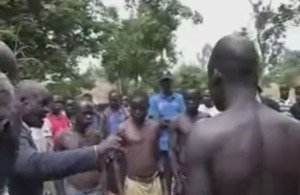In a globalised world, it has become more difficult to label an organisation a “local – indigenous” or an “international-alien” in peacebuilding than ever before. Yet, past experiences have demonstrated that imposed solutions, out of context and without local leadership, are less sustainable and more often disastrous. In Africa, this is especially true for international organisations with headquarters in North America but offering “solutions” to global problems in all corners of the world.
 Imposed solutions, out of context and without local leadership, are often disastrous
Imposed solutions, out of context and without local leadership, are often disastrousThe question is why, despite the very good work they do within northern Uganda, , are Invisible Children more pronounced and well-known in the USA and Europe? The same could be said of many such movements that build on young Americans and celebrity endorsement like the Save Darfur Campaign. Who do we trust for solutions?
One blogger Jennifer Lentfer cautioned us that, before supporting Invisible Children’s Kony 2012 campaign, please consider
- The lack of context and nuance;
- Invisible to whom?;
- The disempowering and reductive narrative;
- Revival of the white savior;
- The privilege of giving; and
- The lack of African leadership.
Is it about the dollars or a false belief that unless Americans know about it, no solution will come our way? Could it be that we are leaving the real change agents in oblivion as we search for solutions elsewhere?
In fact the moment America got involved, we witnessed “Operation Lightening Thunder”- a military operation with disastrous effects as the LRA eluded air strikes, and scattered into DR Congo and the Central African Republic where they continue to commit atrocities in retaliation.
So what’s wrong with Invisible Children’s Kony 2012 campaign?
First, it is important to acknowledge that Invisible Children is a great organisation. It has done a lot to make the victims of the atrocities of the LRA conflict more visible internationally. It has built and renovated a number of schools in northern Uganda that were destroyed by the conflicts. Its scholarship programme has benefited a whole range of children hailing from the war-affected districts and so many more.
These are all very noble goals. But so long as its primary constituents remain outsiders, without mobilising local constituents within Uganda where the LRA problem emanated from, it is a non starter. There are over 1,000 local peacebuilders within northern Uganda alone, all very concerned by the LRA situation - none of whom has been partnered with in this latest campaign.
The campaign was launched in the USA without even informing people in Northern Uganda. Personally, I only got to know about the launch of the campaign through a text message news alert - “American pop artist Rihana joins the war against LRA leader Joseph Kony” which I of course immediately deleted. Only after logging into facebook, and finding a long list of comments following the video Kony 2012 and did the text message I'd deleted make some sense.
A campaign like this would be much better launched at home in northern Uganda and expanded to the rest of the world for collaborative actions. That way, Invisible Children would have appreciated that, beside Kony who is a thousand miles away, over 300 children remain invisible as they die slowly with a mystery disease whose syndrome is constant nodding but whose causes remains unknown. And anger grows toward a government which seemingly doesn't care because it is busy swindling billions of dollars from a nascent oil prospects.
After all, there is an old adage that “charity begins from home." There is no way Invisible Children is going to make Uganda's children visible in America when they remain invisible in their own country. Also having watched the video, I certainly understand why it has raised so much debate. Some blogger described it as “selling an old newspaper.”
It is a good documentary for fundraising but it misses a lot of contexts. Kony remains a problem and so are the over 2000 children dead and over 300 busy dying in northern Uganda today nodding with an unknown "nodding disease" without any government actions.









